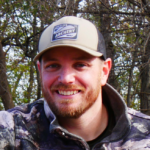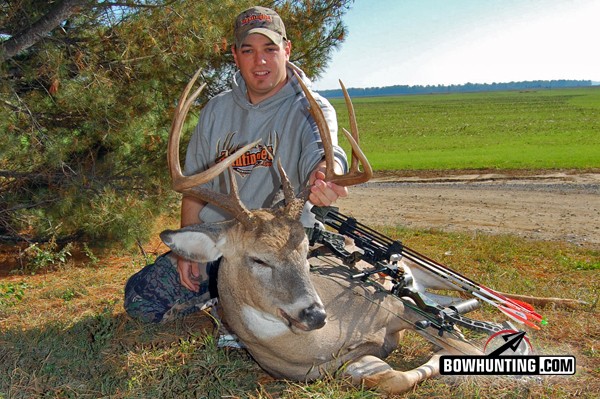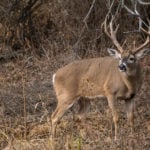LAST UPDATED: May 8th, 2015
With the passing of each bowhunting season I feel that I learn a little more not only about the game I hunt, but about my shortcomings as a bowhunter. This has been especially true the past several years over which I feel I've grown quite a bit. Although I don't have a wall full of Booners to show for it, I have had unquestionably some of the most productive hunts of my life, while at the same time having some of the most unproductive hunts of my life. Which brings me to the point of this particular blog; maximizing your opportunities and successes for next year.
Like most bowhunters I have a fairly limited amount of time to spend in the woods each fall. Between my weekends and a few vacation days I average probably 20-25 days in the field, nearly half of which are spent behind a camera as of late. Needless to say, I need to get the most out of each one of those hunts if I hope to be successful. There are quite a few variables that go into having a successful hunt and as I have found out the hard way none are more important than location. You can be as scent free, quiet, and accurate as possible but if the shot never presents itself you've goten all dressed up with essentially no place to go. The right location can make even a mediocre hunter appear great, and the wrong location can make a great hunter appear mediocre.
When I talk about maximizing your opportunities for success I don't just mean finding more or better hunting grounds. I mean abandoning stands and entire hunting areas that are not producing the results you are looking for. That has been one of my biggest hurdles to overcome in the past several years. Memories and personal attachments to certain spots keep us coming back year after year, but what for? Can we really afford to be wasting several days a year on spots that have rarely or in some cases never produced?
This past weekend I ventured out to look for shed antlers, pull a few of my cameras that have been out since November, and check on a few stands to make sure they didn't grow legs and walk off. One of the areas I ventured into is a farm that I've been hunting since 2001. In the 8 years of hunting this spot I have seen, while hunting, 3 shooter bucks. Only one of which was within bow range, and unfortunately a bad shot ended with nothing more than a bad memory. This past season I hunted there for a total of 5 sits and saw only two deer. I ran a trail camera all summer and fall and got photos of two decent bucks, both well after dark, and both never returned. So after nearly a decade of punishing myself by hunting an area that clearly is never going to produce the size or quantity of bucks I'm looking for, I've decided to pull my stands and move on. And to be honest, it's difficult to think about NOT hunting this spot. But if I want to acheive my goals and give myself the best chances of taking a nice buck, I need to move on.
While both of these bucks are very nice, these are the only two photos I was able to capture of them all year. Both photos were taken well after dark, and neither buck was seen during daylight hours by myself or anyone else hunting this particular farm. A lot of bowhunters may choose to stick around and hope one of them wanders by during shooting hours, but after 8 years of cat and mouse with the bucks on this farm I'm finally throwing in the towel and moving on. Am I crazy?
Fortunately for me, I have several other options to explore and promising areas to hunt which helps ease the pain a bit. However, it wasn't always this way. I spent 5 seasons bouncing from lease to lease looking for an area that could produce on a consistant basis until I finally found one. Unfortunately it's 5 hours from home and I can't hunt it as much as I would like! Which brings me to my next point; changing locations doesn't always mean pulling up stakes and moving halfway across the state. Sometimes it's as simple as moving a few yards. Someone once told me that the difference between a good stand and a great stand is 20 yards. This single statement has stuck with me for years and had a huge effect on my hunting.
Over a 2 week period my trail camera captured 17 buck photos over a community scrape located along a travel corridor. Of those 17 photos 12 were taken during daylight hours. Clearly this information tells me that this is an area where these bucks feel safe and are frequenting during legal hunting hours, and is an area I should focus my attention on next year.
How many of bowhunters sit the same stands again and again after seeing that big buck just out of range? Only a few more steps and you would've had him! This must be a great stand location! Then it happens again. Another buck comes by and he's either just out of range or busts you before you can get the shot off. So close again! So you come back to that stand for the rest of the season, and maybe the next, and even the next, all the while hoping that maybe that buck will come just a little closer next time. But after hundreds of hours on stand and some great stories to tell your hunting buddies your tags are still unfilled.
Ask any bowhunter who has been consistantly successful at harvesting big whitetails the secret to their succes and they will tell you one of two things, and neither one of them is luck. Location and hard work are the two ingredients to being successful on a regular basis according to virtually all of whitetail hunting's elite. That means no longer being happy with just seeing deer, but getting close enough to kill them. In many cases this means staying mobile and not falling into a state of complacency once the season starts. Don't just sit in the same old stands because they're already in the tree or because they're the easiest walk from the truck. If you want to be successful you have to hunt where the deer are at. Click here to read my blog on mobile bowhunting for more information on my techniques and some of the gear I use to help me maximize my chances.
I shot this buck in 2007 after seeing him feeding on acorns several nights earlier. After my first encounter I came back with another treestand and moved in 50 yards closer to where I had seen him. Two nights later he showed up and the rest is history. If I was simply complacent to see him, and hope that he came to me instead of me going to him, I may have never gotten a shot.

 By
By 




